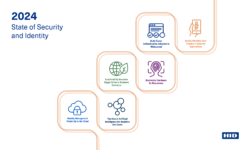Residential Alarm Monitoring Market in Americas to Approach $14B in 2018
Multiple-system operators (MSOs) held about 6% of professional monitored-security accounts in 2017, but are forecast to account for nearly 14% of the market in 2022, according to IHS Markit.

DENVER — Providers of traditional alarm monitoring in the Americas region can expect their market share to expand in 2018, but it will begin to decline in 2019 as more systems are converted into web-connected offerings, according to a research note by IHS Markit.
Despite the increased pressure from do-it-yourself (DIY) systems, the professional alarm-monitoring market is expected to thrive during the next five years, as connected systems supersede traditional alarm-monitoring systems, according to IHS Markit Principal Analyst Blake Kozak.
Multiple-system operators (MSOs) comprised about 6% of professional monitored-security accounts in 2017, but they will account for nearly 14% of the market in 2022.
“Although security providers will continue to make up more than 80% of monitored systems through 2022, MSOs and DIY installations will begin to erode market share. This erosion is especially evident with MSOs, because over the next couple of years more MSOs in North America are expected to launch private systems outside the former Icontrol Networks platform, which was recently acquired by Comcast,” Kozak states in the research note.
Among highlights from the research note:
- The residential alarm monitoring market in the Americas region reached $12.5 billion in 2017; it is forecast to grow to $13.7 billion in 2018.
- Home automation systems made up 32% of all connected systems in 2017. As consumer education grows, and as value-added services become ubiquitous, it is likely the number of professionally monitored home automation systems will surpass the number of interactive systems by 2026.
- With 27% of home automation accounts in the Americas region, Vivint is leading the trend toward home automation for professional systems.
The research note continues:
The evolution of the alarm-monitoring market, from professionally monitored systems to connected systems, is partially driven by MSOs. Collectively, MSOs and professionally monitored DIY systems — such as Frontpoint and LiveWatch (now being rebranded and folded into Brinks Home Security) — will account for 20% of professional alarm monitoring in 2022.
In fact, MSOs in North America will be equal to half the total residential monitoring market in the Europe, Middle East and Africa (EMEA) region in 2022. The cable companies will accomplish this market growth through deep integrations with their existing platforms.
Although combining television, internet, telephone and security is a natural transition for MSOs, some companies have struggled to gain share, but Comcast has been the exception, controlling 78% of MSO monitored accounts in the United States in 2017.
Since the systems provided by the DIY market and MSOs are mostly connected, security providers must continue to innovate and educate dealers, in order to convert existing accounts and demonstrate competitive value for new accounts. As a result, moving customers from a connected system with interactive security functions, to a full home automation system, will be the biggest hurdle to overcome.
If you enjoyed this article and want to receive more valuable industry content like this, click here to sign up for our FREE digital newsletters!

Security Is Our Business, Too
For professionals who recommend, buy and install all types of electronic security equipment, a free subscription to Commercial Integrator + Security Sales & Integration is like having a consultant on call. You’ll find an ideal balance of technology and business coverage, with installation tips and techniques for products and updates on how to add to your bottom line.
A FREE subscription to the top resource for security and integration industry will prove to be invaluable.







